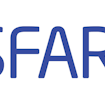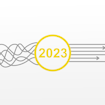
©iStock.com/fatesun
Today, we’re announcing our annual request for applications (RFA) for SFARI Pilot and Research Awards. Letters of intent (LOIs), the short statements that precede full applications, are due no later than December 1, 2017.
With this blog, we hope to give insight into SFARI’s scientific priorities and considerations on experimental design. To learn more about SFARI’s review process, please read our blog “2018 Pilot and Research Award applications: The review process.”
SFARI’s scientific priorities
The issues in autism research are complex, and deciding which of the proposals that we receive are highest priority to fund in light of our mission (“to improve the understanding, diagnosis and treatment of autism spectrum disorders by funding innovative research of the highest quality and relevance”) is one of our greatest challenges. Only applications relevant to this mission will be considered.
Our goal with our annual open RFA is to cast a broad net for the best new ideas, many of which we cannot anticipate and are often made possible by emerging technologies. Hence, we cannot simply provide a list of the types of grants we are looking for. However, we are particularly interested in projects that try to bridge different levels of understanding to advance a more coherent picture of autism spectrum disorder (ASD), for example connecting insights from genes to neural circuits to behavior. In addition, there are a few general guidelines that have emerged from SFARI’s previous grant-review panels and other discussions, which we detail below.
As a first step when preparing a proposal, we strongly recommend that you familiarize yourself with SFARI’s current and past grant portfolio, past targeted RFAs as well as SFARI-generated resources. We hope this helps you think about how your work might complement, but not duplicate, existing efforts.
Genetics and SFARI cohorts
Depending on the statistical cut-off, anywhere from 50 to 100 genes have strong evidence implicating them as risk factors for ASD. Several hundred additional genes have been implicated with lower levels of confidence. Applicants can find more information about autism candidate genes and evolving evidence-based gene scores at SFARI Gene, an online database providing a convenient and comprehensive way to become familiar with the genetic landscape of autism.
With such large numbers of candidate genes, the research community will need to replicate results from the Simons Simplex Collection and other collections in larger populations. We encourage studies that prioritize genes using innovative and integrative methods (bioinformatics and others). To gain a complete picture of genetic risk factors contributing to ASD, we are also interested in approaches that help us better understand how common variants contribute to or modify the risk of autism in the presence of a rare, highly penetrant genetic risk factor.
Given SFARI’s extensive investments in the genetics of ASD to date, prospective applicants are strongly encouraged to familiarize themselves with the data available from SFARI-supported cohorts and to think carefully about how their research would complement SFARI’s ongoing efforts. Genetic and phenotypic data collected for some of the SFARI-supported cohorts can be requested through SFARI’s central database: SFARI Base.
Researchers planning genetic studies should also be cognizant of the efforts of other autism-gene-discovery efforts and be prepared to justify the uniqueness of their proposed studies. We welcome novel and complementary efforts to identify risk variants of any sort.
Additional considerations and updates:
Simons Simplex Collection (SSC)
The SSC is a cohort of 2,600 ‘simplex families’ in which one child is affected with ASD. The genomes of almost all SSC participants (probands and family members) have been thoroughly analyzed genome wide: copy number variants (CNVs), exome sequences and whole-genome sequences are now available for most participants.
Simons Variations in Individuals Project (Simons VIP)
Simons VIP is a ‘genetics first’ cohort that started with the recruitment of individuals carrying a deletion or duplication at the 16p11.2 locus, independent of an autism diagnosis, and later expanded to include individuals carrying a deletion or duplication of the 1q21.1 locus, as well as those carrying mutations in one of 52 genes associated with neurodevelopmental differences and features of autism. A wealth of data, including whole-exome sequencing data, structural and functional magnetic resonance imaging scans and biospecimens (blood, fibroblasts and a few induced pluripotent stem cell (iPSC) lines), from many participants are available to researchers. More information about the data available from participants in the Simons VIP is available here.
SPARK
SPARK (Simons Foundation Powering Autism Research for Knowledge) is the newest SFARI-supported autism cohort and aims to recruit 50,000 individuals with autism and their family members living in the U.S. SPARK launched nationally in April 2016, and by June 2017, over 20,000 individuals with autism and their family members had enrolled. The first phenotypic data from SPARK participants were released in May 2017. In addition, SPARK has launched a research matching program, through which researchers can apply to recruit members of the SPARK cohort into new research studies.
From genes to biological mechanisms
Every year, we receive a large number of applications that propose to use rodent models — and in recent years, Drosophila, C. elegans, zebrafish, nonhuman primates, postmortem tissue and iPSCs — to explore the molecular and cellular mechanisms underlying ASD. Given that a clearer picture of the landscape of autism genetics is now emerging, we welcome applications that increase understanding of how alterations in particular genes cause ASD-relevant changes in cells and circuits, especially pathways and circuits that are likely to be evolutionarily conserved in humans.
We do not encourage applications that propose in-depth biological studies of genes with weak evidence for their implication in ASDs. SFARI Gene is a useful resource for researchers to assess the strength of the evidence underlying a gene’s implication in ASD. SFARI Gene lists hundreds of genes that have been implicated in ASD by various means, but importantly, it also provides a Gene Scoring module that rates the strength of the evidence based on a range of criteria (one being highest confidence and six being lowest confidence). We generally consider “high-confidence” risk genes to be those with scores of one or two.
We are deeply interested in identifying potential points of convergence of multiple ASD risk genes on specific molecular pathways, cells, circuits and systems. For example, at the cell biological level, multiple ASD risk genes appear to implicate actin cytoskeletal dynamics, e.g., through the regulation of Rho GTPases during the growth of axons, dendrites and spines1-3. Efforts to identify cell types central to ASD pathology have also found that expression of ASD risk genes is enriched in midfetal layer 5/6 cortical projection neurons4. At the circuit level, synaptic impairments in the nucleus accumbens have emerged as a point of convergence among multiple genetic mouse models of ASD5,6. It will be important to expand such studies to other ASD risk genes and see if they converge on the same pathways, cells or circuits, or if additional points of convergence can be identified.
Additional considerations and updates:
Rodent models
SFARI emphasizes construct validity over face validity when choosing a model; we prioritize proposals that start with a model that recapitulates a mutation in a risk gene or an epidemiological factor that can be linked to ASD with high confidence. Behavioral resemblance to the human disorder (e.g., in the BTBR inbred mouse strain), such as social interaction deficits or repetitive behaviors, can be a very useful read out, but such behavioral phenotypes on their own do not have sufficient etiological validity to constitute a strong autism model. For models of ASD risk genes, we strongly favor those that model genetic mutations for which evidence of involvement in ASD has high confidence.
Applicants are also strongly encouraged to consider including heterozygous mutants, as most individuals with ASD are heterozygous for the risk variant. Lastly, to shed light on the skewed gender distribution in ASD (~4:1, male:female) and biological differences between the sexes, researchers should strongly consider including male and female animals in proposed experiments.
SFARI is continuing its efforts to make mouse models of high-risk autism genes and copy number variants identified in human genetic studies available to researchers. For a list of mouse models currently available through the SFARI repository at The Jackson Laboratory, visit our autism mouse models webpage. Additional models may be available through other repositories or SFARI investigators.
SFARI is also supporting the creation of several genetic rat models of autism. The first of these, a rat model of fragile X syndrome, is now available. An additional five models based on high-confidence autism risk genes are scheduled to be available within the next year. For more information, visit our rat models webpage.
iPSC lines and available biospecimens
A selection of biospecimens is available for the SSC (lymphoblastoid cell lines, plasma and whole blood DNA) and Simons VIP (fibroblasts and whole blood DNA), some of which could be used for the creation of iPSC lines. Also note that SFARI and independent investigators have generated multiple iPSC lines from individuals who participated in the SSC and Simons VIP studies. For more information on the available lines and how to request them, please visit our iPSC models webpage.
When evaluating applications that make use of iPSCs or organoids, we pay close attention to the experimental design and proposed controls, as there are many variables that can influence the results and interpretation of experiments conducted with iPSCs, especially in experiments with a small sample number. A more detailed list of some of the qualities of past successful applications using iPSCs is outlined here.
Postmortem tissue
SFARI-funded Autism BrainNet (ABN) is a collaborative network for the acquisition of postmortem brain tissue for research. ABN was launched in 2014 and has currently received over 90 donations, of which over 40 are from individuals with an ASD diagnosis. ABN also includes and manages the Autism Speaks-funded Autism Tissue Project (ATP) postmortem tissue collection. ABN is currently distributing tissue from the ATP to qualified investigators. We expect to begin distribution of the newly collected tissue in the second half of 2018. To learn more about ABN and tissue distribution, visit the ABN website.
Human subject studies and new cohorts
For work in the clinical realm, SFARI prioritizes research that is grounded in biology. Over the long term, we hope this approach will lead to effective interventions. Although we recognize the value of other types of research, we prioritize studies that focus on elucidating biological mechanisms.
We welcome proposals that use noninvasive methods, such as functional magnetic resonance imaging (fMRI) and magnetoencephalography (MEG), to directly examine the human biology of ASD. Such approaches can help advance ‘forward’ translation to biomarkers and objective outcome measures as well as ‘back’ translation to studies of neural mechanisms in ASD animal models. It should be noted, however, that given the heterogeneity of ASD, we place a premium on the use of sufficiently powered and well-characterized cohorts.
We’ve learned from our own efforts and experiences of previous grantees that recruitment and retention is far more difficult, time-consuming and costly than many researchers anticipate. Therefore, unless there is a compelling reason for a new cohort, we recommend that researchers collaborate with existing teams that already have a study group, and pay careful attention to ascertainment biases that can influence the results. If recruitment of a new cohort is absolutely necessary, we strongly recommend that applicants take a look at the supplemental information sheet for clinical studies, a questionnaire that we require to be submitted with full applications (not with LOIs) that seek to build a new cohort.
We also encourage investigators to use well-characterized cohorts, such as the SSC, the Simons VIP and SPARK, for which genetic data is available for all or many participants. In addition to genetic data, multiple other types of data and biospecimens are available for those cohorts (medical history, psychometric testing, brain imaging, etc.); please follow the links to the individual cohorts for a more detailed description of available data. We hope by recruiting from the ‘Simons Collections’ investigators can layer existing data with their new data to create a coherent picture of ASD. Importantly, we hope that new data can be shared with the community to accelerate research further. We encourage researchers interested in recruiting SFARI cohort participants for new research studies to familiarize themselves with the recontacting process and to contact [email protected] to learn about the availability of individuals suitable for the proposed study.
Finally, we believe that it is no longer sensible to study individuals with ASD without knowing something about their genetic background or, at a minimum, including the collection of biospecimens for future studies and analyses. We will work with investigators who need advice about logistics on this subject while preparing their application.
Remaining questions?
The RFA for Pilot and Research Awards casts a wide net and this blog only captures a few of our considerations. If you have additional questions regarding whether your proposed project is suitable for SFARI funding you can contact us at [email protected].
References
- Park J. et al., J. Cell Sci. 125, 67-80 (2012) PubMed
- Chen Y. et al., Mol. Cell 35, 841-55 (2009) PubMed
- Packer A., SFARI.org (2013) Article
- Willsey A.J. et al., Cell 155, 997-1007 (2013) PubMed
- Rothwell P.E. et al., Cell 158, 198-212 (2014) PubMed
- Platt R.J. et al., Cell Rep. 19, 335-350 (2017) PubMed


